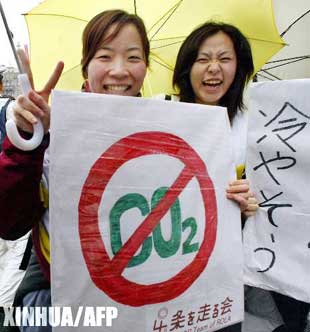Source: CCTV.com
04-16-2007 16:31
 |
As the world's second largest economic power, Japan is well known for its modern industrialized facilities. And the country of islands is also renowned for being clean. In today's Rediscovering Japan Series, we take a look at how Japan protects its environment.
This is Abiko city in Chiba prefecture, a city well-known for classifying its garbage and recycling. In 2005, the city's recycling rate exceeded 40 percent. Abiko has had this system in place since 1981. Garbage is sorted out into 17 categories before it is collected. Every family in the city divides their trash and sends it to the designated garbage collection station.
This is not unique only to Abiko. In other Japanese cities, garbage is sorted into several dozens categories. This seemingly complicated method has been accepted by most Japanese people, and has changed their attitudes and lifestyles.
Japanese citizen Mr. Sasaki said, "Our lifestyle has changed greatly since we implemented the measures. For one thing, people try to create less trash, and for another they are unwilling to waste things. This make them aware of the importance of environmental protection. If the garbage collection work is done well, we'll have a better city to live in. In the past it was quite dirty. Now people are getting a better sense of cleanliness, so a few people often help sweep the streets voluntarily."
But in the past few decades, Japan has been polluted. After World War Two, the devastated country took 20 years to created a miracle through a rebounding economy, which came about at a price ... environmental destruction.
In the 1950s a strange disease was discovered in Japan's Minimata Bay infecting thousands of people. It was caused by the emission of industrial waste water. This painful experience sounded alarm bells and motivated the Japanese to change their attitude and look towards protecting the environment.
This is a garbage treatment center in Osaka. Designed to look like a children's science museum. The plant deals with garbage collection and recycling, and the second and third floors are opened to visitors for free.
